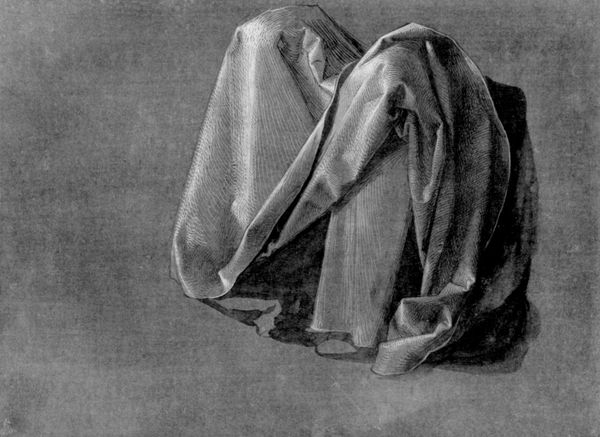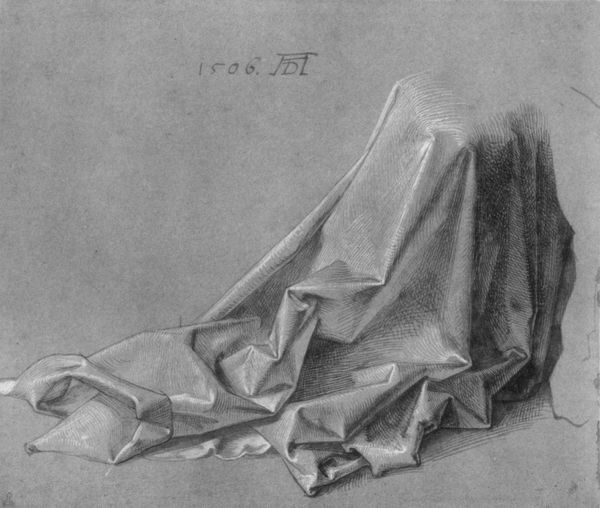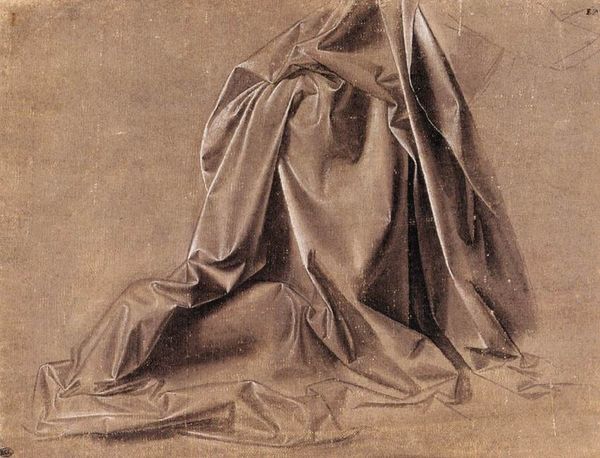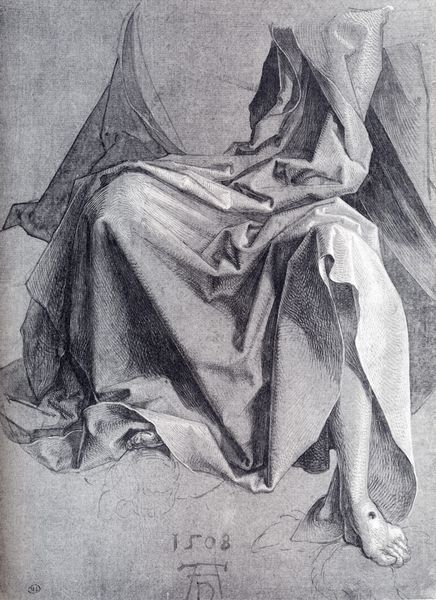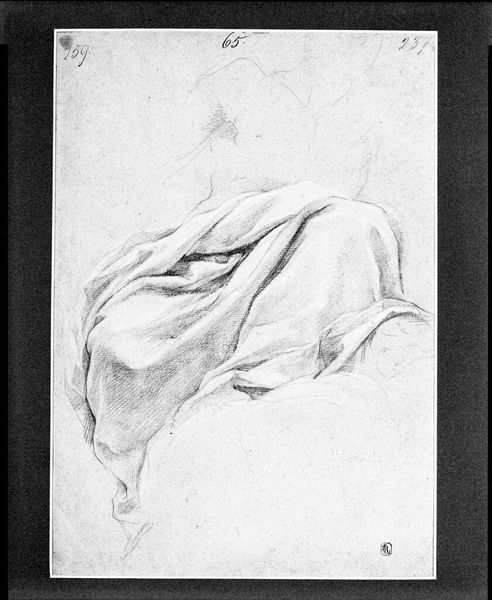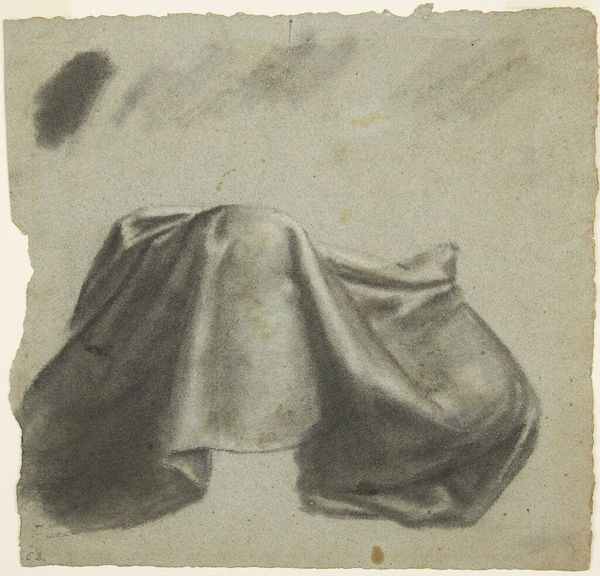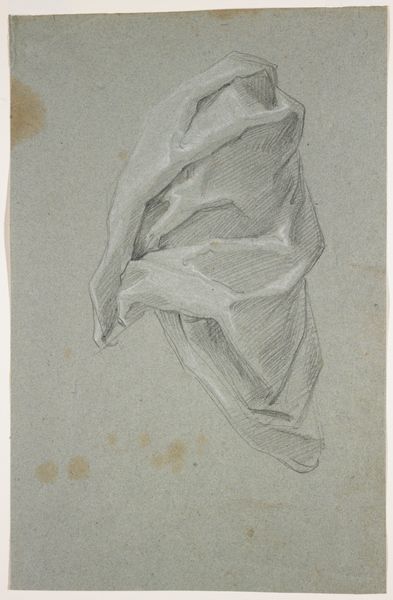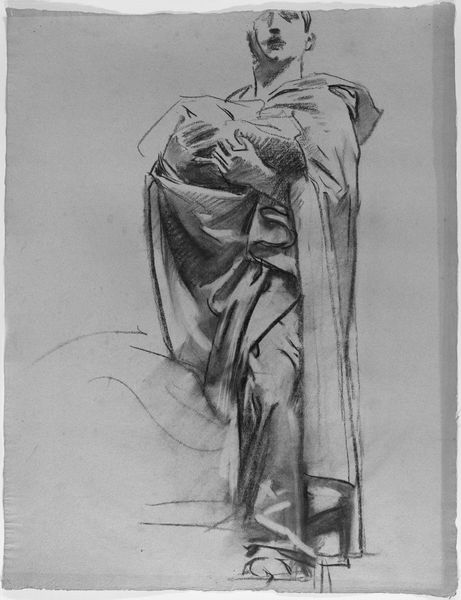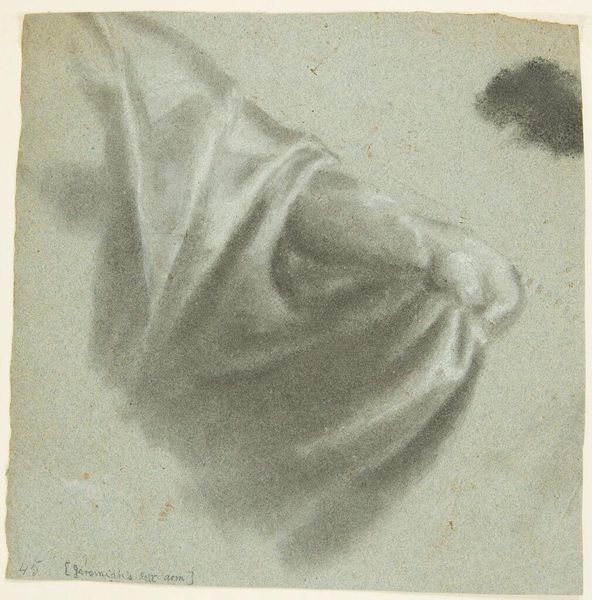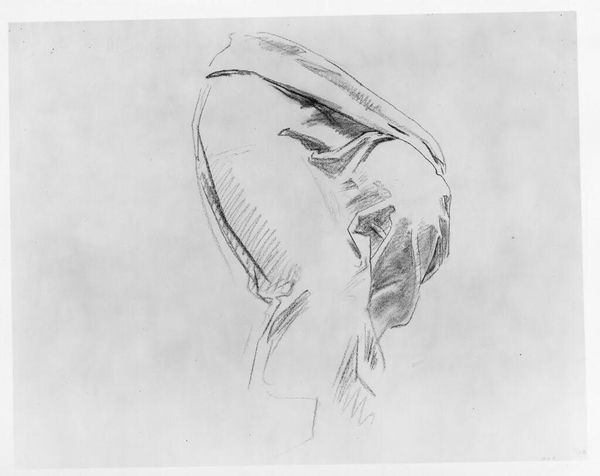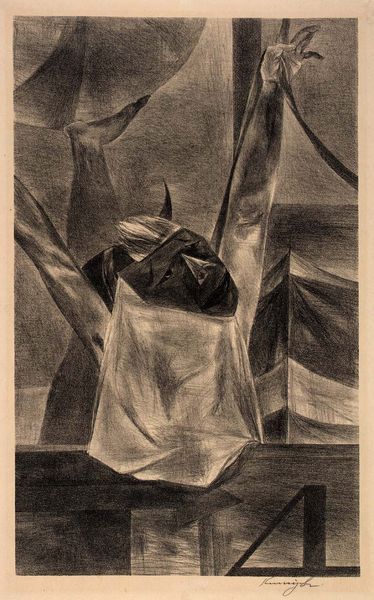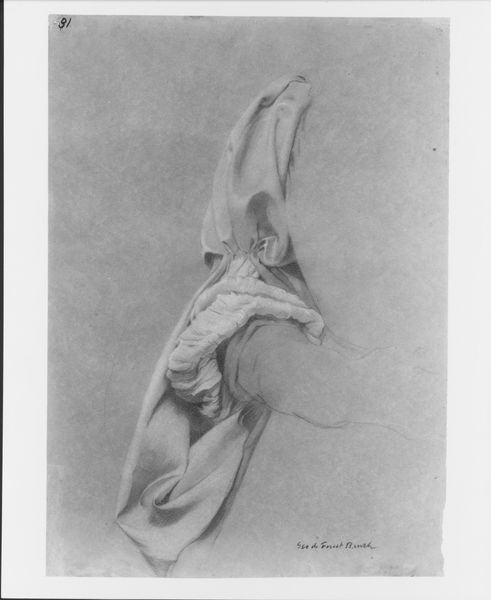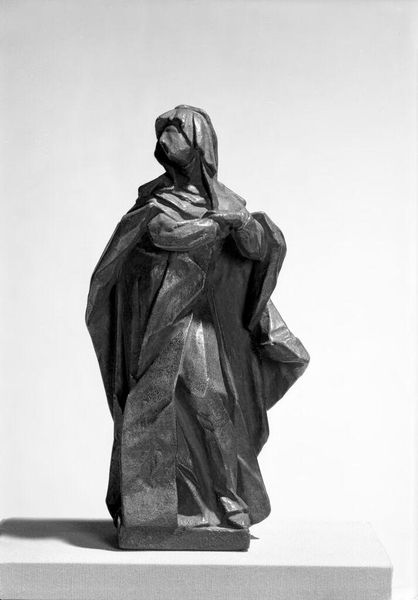
drawing, photography, graphite, charcoal
#
drawing
#
pencil sketch
#
charcoal drawing
#
photography
#
graphite
#
charcoal
#
charcoal
#
graphite
Copyright: Public domain
Curator: Oh, my goodness, that's... fabric. Just gorgeous folds, like liquid light arrested in time. It feels deeply tactile, almost like you could reach out and gather it. Editor: We’re looking at a drawing attributed to Albrecht Dürer, aptly titled "Father's robe God". What immediately strikes me is the materiality—the artist seems intent on showcasing virtuosity with charcoal and graphite, rendering light and shadow into tactile form. But beyond the sheer skill, I wonder, what does the cloth signify? Curator: Well, cloth in art often speaks to the everyday, the domestic, even the sacred depending on the context. And given the tentative title, it could suggest both earthly comfort and the sublime, hinting at something much larger than just a pile of fabric. It also brings me back to my own childhood, hiding beneath draped cloths playing "house." Pure joy, wouldn’t you agree? Editor: Absolutely, there's something inherently human about our connection to textiles. I agree there’s something inviting about those folds, they offer possibilities. Considering that Dürer was working during the Reformation, the drape becomes almost allegorical, cloaking religious authority during a period of intense scrutiny. And the photographic aspect might suggest a connection between drawing, veracity, and the mechanical reproduction that soon would be common. Curator: Interesting point. To me, there's something timeless and deeply personal about the study of light and shadow. This is less a depiction of literal fabric and more an investigation of form, a testament to the sheer magic an artist can conjure with simple materials and his own observation of how light moves. Editor: Yet, "simplicity" itself is a construction, no? Even seemingly quotidian details reflect broader cultural attitudes. I would be curious to know if this connects to an emerging class of merchants displaying these same fabrics in their household environments, thus, making a visual representation not only a formal exercise, but a symbol of nascent global commerce. Curator: Perhaps. Or maybe Durer was simply drawn by the beauty of the subject, the way it holds and reflects light and transforms with every slight movement. Who is to say we always need to tie art down with our projections and interpretations? Sometimes, it's simply about letting something beautiful speak for itself. Editor: Agreed, beauty can indeed be a starting point. By examining these visual artifacts through both intimate reflection and theoretical lenses, perhaps we are best positioned to tease apart not only their beauty, but also the dense networks of meaning that they hold, just as the cloth itself gathers and presents what we are finally able to glimpse and discern.
Comments
No comments
Be the first to comment and join the conversation on the ultimate creative platform.
